It is no secret that over the past several years the American economy continues to strengthen. As a result, the unemployment rate has steadily declined and more Americans are finding work or growing into better positions. By all accounts this is good for both people and business. However, as the economy grows, and the American workforce continues to rise through the hierarchy, they perpetuate an insidious condition that is sabotaging the modern business landscape.
There is a foundational belief that the customer is always right, and it constrains modern leaders because it prevents them from saying “No”. Saying “No” to a customer is difficult.
Fear of losing the customer or an opportunity usually drives leaders to acquiesce. Luckily, the internal customer—our employees and business partners—is the main group that needs to be told “No”. How often, for example, does your IT team find legacy hardware at employees’ desk because someone wanted to keep their old set-up? Similarly, how many organizations find themselves with various ERP or business intelligence tools because a small sub-set of the team has an attachment to a particular system? The reluctance to say “No” kills efficiency and creates waste, yet managers go it daily.
Saying no to an internal customer is often avoided in an attempt to choose your battles or play office politics. In reality, saying “No” is more advantageous when used as the beginning of a bigger discussion that allows businesses to engage on a deeper level and create innovative solutions. Saying “No” as a means to begin a conversation, rather than end it, helps companies grow in several key ways.
1) Improves Integration
Business integration is defined as the strategy whose goal is to synchronize culture and objectives. Over the last 10 years almost every industry has seen consolidation. The supply chain industry, in particular, has seen numerous high-profile M&A announcements as transportation, warehousing, and manufacturers have consolidated over the years. As these companies move forward integration becomes paramount to the new company's success.
 Austin, a materials analyst, recently ran into an integration issue at her company. While implementing a system launch at one of her facilities a manager wanted to add an additional reporting system for their department. No other facilities would use this system except this one and it would add additional work for multiple departments to manage. After a week of people telling the manager why it was a bad idea, the manager got the go ahead.
Austin, a materials analyst, recently ran into an integration issue at her company. While implementing a system launch at one of her facilities a manager wanted to add an additional reporting system for their department. No other facilities would use this system except this one and it would add additional work for multiple departments to manage. After a week of people telling the manager why it was a bad idea, the manager got the go ahead.
Indeed, there are times where a particular facility might actually need special treatment, but more often, the additional treatment sabotages efficiency. Telling one manager “No'” directly could have increased efficiency for multiple departments and aligned operations per the business' integration strategy.
2) Leading to a bigger “Yes”
If we break down our daily tasks into what is important and what is urgent we find a four-quadrant time management table where quadrant 1 represents those responsibilities that are both urgent and important and quadrant 4 represents not urgent and not important.
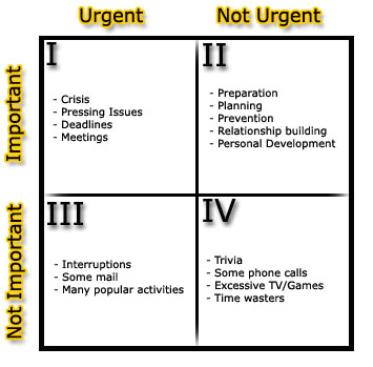 What tends to happen is professionals spend the bulk of their time in quadrant 1 dealing with emergencies, last minute preparations, and putting out fires. Many managers are rewarded in their career for effectively managing quadrant 1; however, the higher levels of organizations require focusing on the responsibilities that are important but not always urgent.
What tends to happen is professionals spend the bulk of their time in quadrant 1 dealing with emergencies, last minute preparations, and putting out fires. Many managers are rewarded in their career for effectively managing quadrant 1; however, the higher levels of organizations require focusing on the responsibilities that are important but not always urgent.
As a front-line manager or second tier manager, the day to day activities frequently deal with customers and the short-term tactics. Pleasing the customer and creating positive customer experiences is name of the game. In contrast, higher ranking roles deal with long-term strategy and positioning. In these roles various potentially viable strategies are considered before getting ruled out. Learning to say “No” properly, allows managers to evolve into leaders who coach, anticipate, and plan for success instead of reacting to situations.
3) Increases Engagement
Tony Benedict, former VP of Procurement and Supply Chain with HonorHealth, led Honor Health's supply chain department through its merger in 2014 and 2015. During a recent speech on Merger Integration of Health Systems he talked about the necessity of engagement. As Tony's team deconstructed two ERP systems and migrated to a new ERP system, they stayed in constant contact with downstream as well as upstream stakeholders. While numerous departments sought to retain practices and systems that favored their department, his team remained focused on their mission to develop a system that works for the new organization. As Tony puts it, “we had to confront the brutal facts”.
The fact was, not all of the legacy systems added value and would not continue. However, using “No” as a way to begin a more in-depth conversation allowed his team to have a holistic view of the system that helped them create a better system. If, in Austin's case, someone told the facility manager “no, but how about you lead a cross-functional project team to review how the organization as a whole could benefit from your proposed system” more people would be engaged in the process and the potential benefits would be shared across the company.
Saying “No” can be a powerful tool to enhance integration, reduce waste, and increase efficiencies when used to support organizational strategy. But, saying “No” should never be the end of the conversation. Two essential questions should be asked first: 1) “Are they asking for a genuine better product?”, and 2) “Can we add value to our end user by implementing this request?”
Challenging the belief that the customer is always right and saying “No” must be practiced and managed just like every other skill we expect from our leaders. Not only will this keep your company lean and focused on the company’s vision, it will create the space for individuals to grow into leaders.
SC
MR


Latest Supply Chain News
Latest Podcast
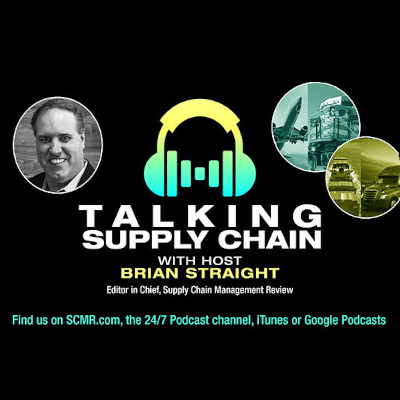
 Explore
Explore
Procurement & Sourcing News
- AI-driven sourcing: Why the speed of change is going to only accelerate
- A Silk Road city
- U.S.-bound containerized import shipments are up in June and first half of 2024
- Boeing turned to Fairmarkit, AI to help land its tail spend
- When disaster strikes, the supply chain becomes the key to life
- A smarter approach to sustainability is vital for healthy, resilient supply chains
- More Procurement & Sourcing
Latest Procurement & Sourcing Resources
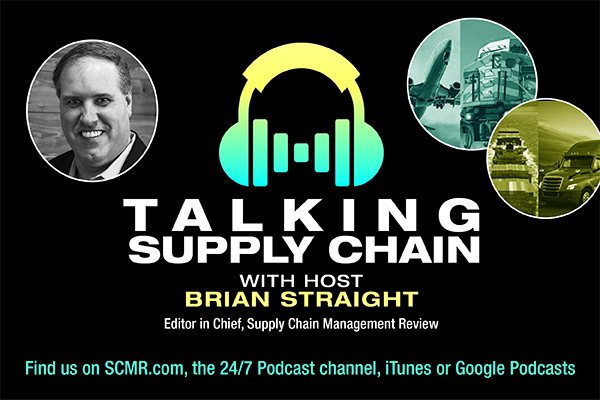
Subscribe
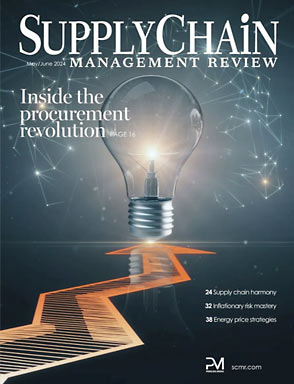
Supply Chain Management Review delivers the best industry content.
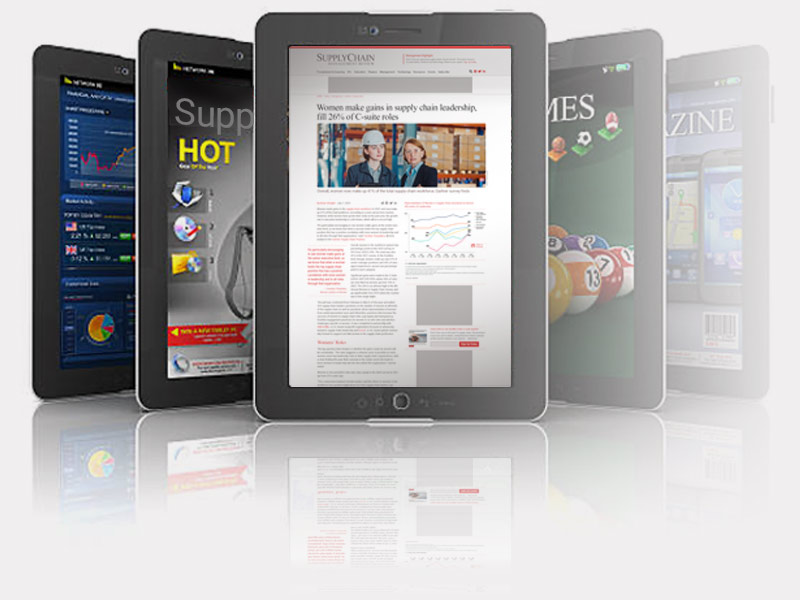
Editors’ Picks




